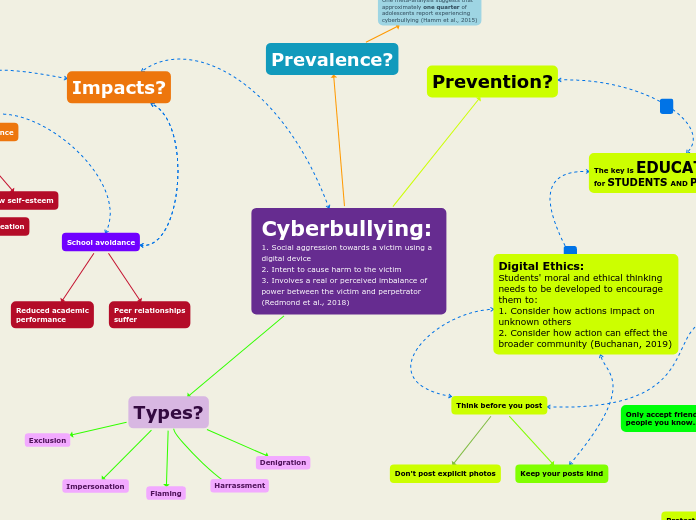Cyberbullying:
1. Social aggression towards a victim using a digital device
2. Intent to cause harm to the victim
3. Involves a real or perceived imbalance of power between the victim and perpetrator (Redmond et al., 2018)
Prevalence?
One meta-analysis suggests that
approximately one quarter of
adolescents report experiencing
cyberbullying (Hamm et al., 2015)
Prevention?
Types?
Impersonation
Exclusion
Flaming
Harrassment
Denigration
